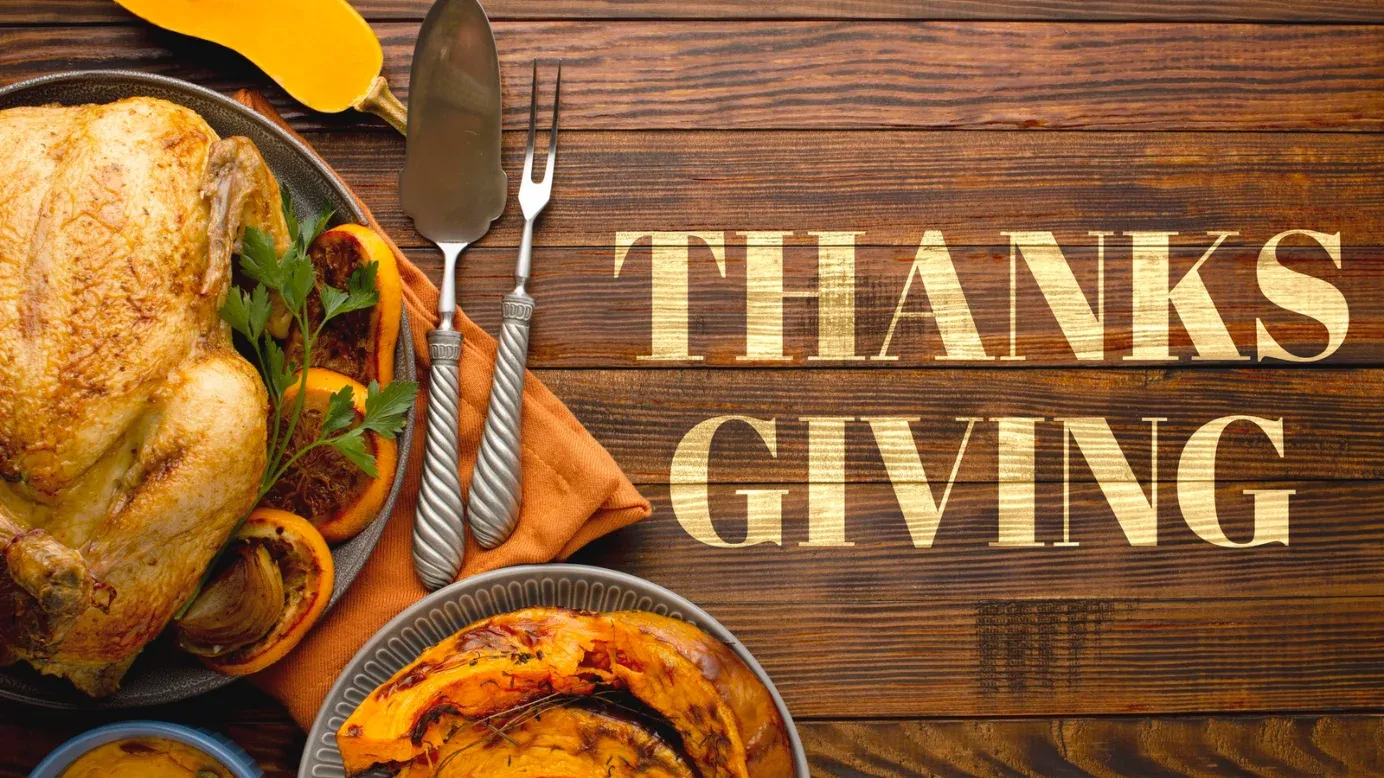Celebrating Thanksgiving

Thursday is Thanksgiving Day in America, a day to celebrate, to enjoy, to partake, and most of all, to be grateful for what we have and to be generous to those less fortunate.
The concept of a “Thanksgiving Day” has its roots in ancient religious and cultural celebrations of the autumn harvest. In North America, Thanksgiving was celebrated for more than two centuries by individual English colonies and then American states before President Abraham Lincoln declared it a national holiday in 1863 and fixed the November date of observance. The first American President, George Washington, had issued a Thanksgiving proclamation in 1789, but the custom was observed only sporadically thereafter by his successors until Lincoln acted to formalize the event as a federal holiday in the midst of the Civil War, hoping a day of celebration would help ease the suffering brought on by brutal internecine conflict and salve the nation’s wounds.
The best known of the early Thanksgiving gatherings was held in October 1621 in Plymouth, Massachusetts, to celebrate the first successful English harvest in the New World. In November 1620, 102 members of an English church congregation from Nottinghamshire, England, who called themselves Separatists or Pilgrims and were seeking religious freedom from the Church of England, arrived in Cape Cod Bay after a difficult 66-day voyage across the Atlantic Ocean onboard a tiny sailing ship called the Mayflower. The settlers’ first winter in New England was cold and bleak and the only way the colony endured was through the gifts of food they received from the native people, known as the Wampanoag. When spring arrived, the Wampanoag also taught the colonists how to grow native corn. The harvest of the settlers’ first growing season in the New World was bountiful and as they gathered their crops and the fish they had snared and the fowl they had hunted, the surviving English colonists wanted to give thanks to God for the abundance of autumn and their deliverance from those first dark months of sickness and scarcity. They invited their benefactors to join them in their celebration. The first Thanksgiving was a three-day feast attended by 53 Pilgrims, joined by a delegation of 90 Wampanoag led by their King, Massasoit, and featured a veritable culinary cornucopia of frontier food, including wild turkey, duck, goose, oysters, lobster, eel and fish, with sides of corn, cooked pumpkin and cranberries, as well as venison that was brought as a gift by the native Americans.
Today, turkey is the centerpiece of a traditional Thanksgiving feast, roasted, carved and served along side mashed potatoes, gravy, pies, cakes and other decadent desserts, but none of those foods became a staple of the customary holiday cuisine until the mid-19th Century.
More recent additions to the Thanksgiving holiday include parades with marching bands, performers, elaborate floats and in cities and towns across the country. In 1941, President Franklin D. Roosevelt established the fourth Thursday in November as the official date, and a few decades later President John Kennedy introduced the “pardoning” of the turkey, which was eventually formalized by President George H. W. Bush in 1989.
Today, Thanksgiving remains a favorite and much beloved American holiday, and has been enhanced in spirit and deed by those who volunteer with food drives and hosting free dinners for the less fortunate among us.
Happy Thanksgiving to all, from Stephen Hofer and the whole team here at Aerlex Law Group.
